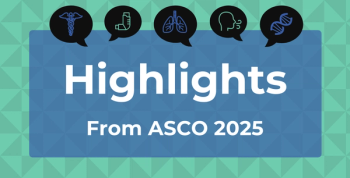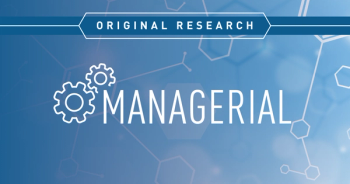
- November 2025
- Volume 31
- Issue 12
- Pages: SP850-SP851
Intermountain Spans Time Zones, Cultures to Bring Oncology Care to Alaska
Key Takeaways
- The TCC and Intermountain Health partnership provides local cancer care in Fairbanks, reducing travel for Alaska Native patients.
- Teleoncology services include chemotherapy, infusion therapy, and support, with weekly telehealth appointments with a Utah-based oncologist.
In remote areas of Alaska, health care delivery follows a different set of rules. Through the state’s vast interior, a tribal health consortium called the Tanana Chiefs Conference (TCC), serves 20,000 Alaska Native and American Indian individuals living across 235,000 square miles of rugged terrain, much of it disconnected from road systems and reachable only by small aircraft.
But that does not mean the Tanana Chiefs do not hear from the people. Each year, a convention brings both delegates and patients to Fairbanks, Alaska, to discuss what health or social services are needed. As Angela Lucien, MPAS, PA-C, now a physician associate and team lead for TCC’s Cancer Care and Infusion Center (CCIC), explains in an interview, “Year after year, there was lots of talk, what are we doing about cancer?”
Lucien, who has worked in Alaska with the Indian Health Service for more than 7 years, said Alaska Native patients were well aware they had higher rates of certain cancers: liver, lung, colorectal, gastric, and kidney. For too many, a cancer diagnosis meant a trip of at least 350 miles to Anchorage for each treatment, a prospect so daunting that many did not seek to start chemotherapy or even go for cancer screening.
It was time to bring cancer care close to home, Lucien said. And that persistence has yielded a partnership between the TCC and Intermountain Health, one that combines modern technology with respect for Alaska Native culture.
The collaboration with Intermountain’s teleoncology program allows patients to receive chemotherapy, infusion therapy, imaging, laboratory testing, and support services in Fairbanks, which is centrally located within the TCC service area. Once a week, a Utah-based oncologist, Erik Rupard, MD, has telehealth appointments with patients who come to the Fairbanks center.1
Kimberlee Rowett, DNP, MSN, MBA, RN, technology clinical manager for oncology, telehealth, and care navigation at Intermountain Health, explained in a separate interview that the health system embraced the shared vision—and how making the telehealth piece function was, in some ways, only the start of the process.
“The conversations really focused on understanding the Tanana Chiefs’ unique needs and cultural priorities,” Rowett said. “From there, we then built a more collaborative model than we've done in the past, where we really wanted to base this program on trust, respect, and the shared commitment to health equity for this unique patient population.”
Rowett said the partnership has 3 main components: honoring Alaska Native traditions and community values, ensuring that technology infrastructure is a foundational key to the partnership, and, through teleoncology, providing treatment plans that allow patients to stay locally when possible.
In the early going, the focus is on single agents, but Rowett said the plan is to move toward providing combinations. “We’ve had to send patients who are a little less stable to the urban cancer center, where they need to be hospitalized for that treatment, because it's such an intense treatment,” she said.
Long term, she said, the plan is to identify resources within the TCC hospital to provide more services over time, offering even more access and precision treatments, which can be offered via telehealth.
Culture Is Key
Small things count in this partnership, and so does listening. The exam room in the Fairbanks CCIC is set up with a wall-mounted TV, which is designed to give the feeling that the physician is sitting in front of the patient, Rowett explained. But local leaders pointed out one problem: The video component had a camera placed overhead, which looked like a surveillance camera.
“Given the history of this patient population, the Tanana Chiefs’ staff advocated that we should consider what this means for patients—that this will bring up certain emotions, and maybe they will have their guard up,” Rowett said. “We removed the camera from in the ceiling and put it underneath the TV,” It was an easy solution but not something Intermountain would have considered without collaboration, she said.
Intermountain has worked with tribal health providers before, and it has learned that gathering feedback matters. In an earlier partnership, Rowett said, the health system learned that for some patients, the way a physician conveys a cancer diagnosis “can feel like the doctor is cursing them with the diagnosis.”
Rupard, she said, constantly sought early feedback on his wording and body language. Lucien said he knows just how to build relationships with patients, covering the “must do” items while being flexible for times “when we get in the room and the patient just wanted to talk about moose hunting.”
Social support takes center stage in the TCC model of care, Lucien said. In a typical US care environment, a patient would first be diagnosed with cancer before being asked if he or she is experiencing depression or needs nutrition or transportation support; at the Fairbanks center, those questions are asked first. Because Alaska Native patients typically cannot just show up for a mammogram—a rural health provider may visit 4 times a year—this approach is necessary.
“We work really hard to try to reduce those disparities and those challenges and barriers for patients in our program,” she said. “So, when a patient comes in for a visit here, we talk to them about depression and anxiety and substance use, and what supports [they] have at home. And our oncology nurse navigators go through a very detailed initial assessment to look at all the barriers that might be preventing someone from getting care, and then they work together to try to solve them.”
“I think our program goes a little bit above and beyond the traditional cancer treatment algorithm, because of the unique needs related to caring for Alaska Native [patients],” she said.
TCC now has a working group looking at higher rates of gastric cancer, Lucien said, including whether this is tied to higher incidence of Helicobacter pylori infection in the population, which can occur due to contaminated water or food—and spread without symptoms.
Making Technology Work
The focus on honoring cultural needs doesn’t mean there were no technology hurdles to overcome. Electronic health record integration (EHR) can be challenging in any circumstance, Rowett said, but this partnership offers unique tests—especially when working with patients who may have no broadband access. This affects everything from communication to scheduling patients who may be 3 to 4 time zones away.
“We are trying to find the balance of, ‘How do we make our technology work with their technology, so that we are streamlining the process?’” Information technology teams on both sides must work closely so that provider notes move from one EHR to the other, Rowett said, giving access not only between Intermountain and the Fairbanks CCIC, but also for primary care physicians, social workers, and nurse navigators.
“It was really important to align the electronic medical record across both systems, so that we could ensure continuity of care regardless of where the patient is in their cancer care journey,” Rowett said. She praised the work of staff members sorting out licensure and compliance issues, given that the providers operate across state lines. Working with TCC affects everything from licensure, to regulatory affairs, to reimbursement, as Rowett explains that support for the partnership comes from a mix of federal, state, and tribal sources.
“It certainly has been a unique cross-state licensure and tribal health regulation experience that we didn't have before,” she said.
Reference
New Intermountain Health teleoncology partnership brings life-saving cancer care closer to home to interior Alaska. News release. Intermountain Health. August 19, 2025. Accessed August 20, 2025.
Articles in this issue
about 1 month ago
The Power of a Unified Voiceabout 1 month ago
What Patients Are Really Telling Us About the Use of AIabout 1 month ago
A Prescription for Improving Biomarker Testing for More Patientsabout 2 months ago
Team-Based Precision Oncology: Advancing Value and Access in Cancer CareNewsletter
Stay ahead of policy, cost, and value—subscribe to AJMC for expert insights at the intersection of clinical care and health economics.







































